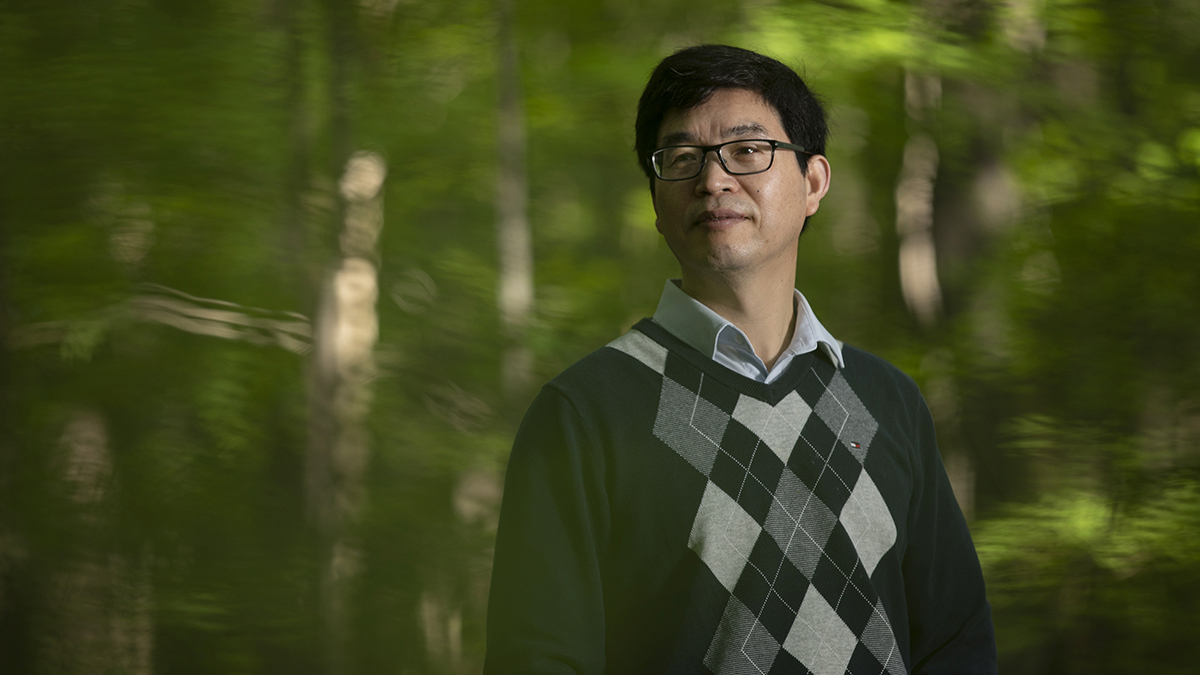Restoring rural China
While the United States and China take up roughly the same amount of land mass, China’s population is over four times that of the U.S. — and more people means more change in vegetation growth. How do these factors connect to climate change?

During the 1970s, in a rural village in the eastern Chinese province Anhui, a young Conghe Song and his family participated in collective farming to make a modest living. Countless hours were spent in the paddies cutting the plants by hand with a sickle and then replanting, literally one grain of rice at a time.
With no electricity, Song spent hours doing homework under an oil lamp. Each week, he spent a quarter for a candle so he and his classmates could work after dark — the cost, a burden on his family, he said.
Back then, college was the only way for Song to obtain a career beyond the village, but it was an uphill battle. Resources like financial aid and trained teachers went to the urban schools. He was fortunate to have a mother who was literate — at the time she was the only woman in the village who could read. She helped him with his homework and was strict about his education.
“I always admired the other kids in the village. They could go to school or not and they didn’t have the consequences I would have at home if I skipped school,” Song said, laughing.
Upon graduation, just two students from Song’s high school class of 54 went on to college — and he was one of them.
Now a Carolina geographer, his work has led him back to rural China.
Finding a niche
When Song began his college education in China, he was given the choice between four disciplines to pursue: medicine, education, the military and agriculture. Growing up on a farm, he figured agriculture was a good choice, but later realized the topic wasn’t holding his interest. At that time, though, because of China’s planned economy students couldn’t change their major. Once accepted by a university, they had to stick with their chosen field of study.
Luckily for Song, he discovered remote sensing — the use of satellites to observe the Earth — during graduate school in the United States. “That had the wow effect on me,” he said. “You have a synoptic view of the world that you can’t get on the ground. There’s so much information you can derive from the remotely sensed images, like the status of vegetation, and you can do this continuously for a large area and even for the whole world.”
As a physical geographer, Song uses remote sensing and ecological modeling to study how changes in climate, land use and land cover affect the amount of carbon dioxide plants can remove from the atmosphere through photosynthesis. Factors that influence this can vary from climate stressors like drought to human activities like deforestation.
Song realizes many environmental problems the world faces today originate from how humans change land-surface conditions. Loss of biodiversity and severe flooding? These are products of deforestation. Pollution? The huge amounts of fertilizers and pesticides applied to crops plays a large role.
That human element makes Song’s work incredibly interdisciplinary, and is why he teamed up with researchers at the Carolina Population Center, University of Virginia, University of Michigan and colleagues in China.
Changing a landscape
Song returned to Anhui in 2011, but this time for work. For five years, he made annual trips to rural Chinese provinces to talk with farmers about their livelihoods, to see how their lives were influenced by recent environmental policies.
With over 1.4 billion people — over four times that of the United States — China is the most populous country in the world. This means it has the biggest conflict between human use and conservation of natural resources, according to Song. Because of this, degradation to the environment over the years forced the government to implement programs to restore and protect the land.
Immediately after the People’s Republic of China was established in 1949, following the Chinese Civil War, the government made timber production the sole purpose of forest management. Their mistake, Song explained, was looking at the short-term economic benefits instead of the long-term consequences.
Two natural disasters in the late 1990s forced the government to change its ways. In 1997, the Yellow River — the second longest river in China — remained dry for 226 days due to drought, which led to huge economic losses, like the destruction of cropland dependent on the river’s irrigation system. The following year, historic flooding from deforestation killed more than 4,000 people.
In the wake of these disasters, the Chinese government established six forest programs to curb environmental deterioration, including some that encourage farmers to reforest croplands with little agricultural value in exchange for monetary compensation.
Song saw that the programs had impacts on both the environment and the local social systems, and wanted to learn the effects on both.




